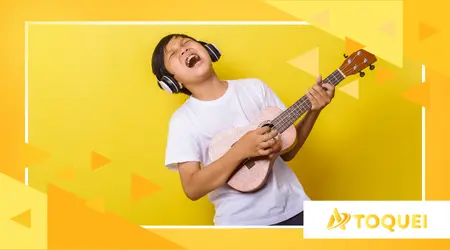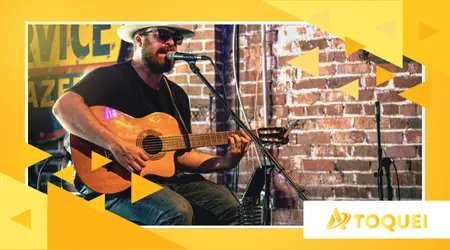Techniques for singing and playing an instrument at the same time

I recognize that one of the greatest challenges and, simultaneously, satisfactions of a musician is the ability to sing and play an instrument at the same time.
Advertisements
As a journalist specializing in musical instruments and an experienced writer.
This coordination, which at first glance seems like a feat for the few, is actually a technique accessible with the right training and mindset. It's a true mental and physical dance.
How Does the Mind Process the Dual Task of Playing and Singing?
The synergy between voice and instrument does not arise by magic, but by the optimization of cognitive functions.
The brain needs to divide its attention and, with practice, transform one of the actions into an almost automatic process.
Advertisements
Initially, each action requires conscious effort and total focus. Fine motor skills for the instrument and vocal control are separate.
Over time, the instrument becomes an extension of the body, freeing up mental resources for the vocal melody and lyrics. This is what neuroscience calls automatization.
It is a phenomenon of “muscle memory” taken to the extreme, where the subconscious takes over part of the execution.
Why Slow Practice is the Key to Coordination?

Rushing the process only leads to frustration and more consistent mistakes. Slowness is the friend of precision in learning.
The practice in times greatly reduced allows the brain to establish the correct neural connections without overload. This ensures the quality of the input.
Read more: What is a harmonic field and how to apply it in everyday life?
Imagine a cyclist learning to pedal and whistle simultaneously. At first, focusing on one throws the other off balance.
Slowing down musically helps solidify the bridge between the rhythm of the instrument and that of the voice. Patience is an investment.
This technique avoids the brain “short-circuit” that occurs when trying to perform two complex tasks at high speed.

What Exercises Help You Synchronize Your Voice and Hands Quickly?
There are focused exercises that isolate and then combine the specific difficulties of this double execution. The key is structured progression.]
++ How to use backing tracks to practice improvisation
An effective exercise is to play a simple chord progression (example: GCD) while reciting text unrelated to the song.
This forces the brain to compartmentalize tasks: one rhythmic and the other purely verbal. Gradually increase the complexity of the text.
Another method is to play a steady rhythmic pattern (just beats) while singing an entire melody, focusing only on the timing from the entry of words.
For guitar or keyboard, start by singing just the root note of each chord on beat 1. Then add the rest of the melody.
This creates a rhythmic anchor between the melody and the fundamental pulse of the accompaniment. It's a scaffolding musical.
++ Protocol for Learning to Sing and Play at the Same Time
The Rhythmic Division: How Does the Rhythm of Singing Interact with the Instrument?
The overlapping of rhythms is often the most difficult point for those who aim to sing and play an instrument at the same time.
The rhythm of the accompaniment (instrument) and the rhythm of the melody (voice) are rarely identical, creating musical richness and complexity.
To master this division, it is crucial to internalize the pulse of music. It is the invisible metronome that guides both.
The instrument generally maintains a more predictable pattern, while the voice has more elaborate syncopations and pauses.
The musician needs to feel the rhythmic independence of each part, but recognizing the beat common that unites them.
It's like driving in a traffic jam and talking on your cell phone (with hands-free, of course); each action has its own rhythm, but the pulse of the road is one.
++ Basic Mixing for Beginners: 5 Adjustments That Make a Difference
Neuroplasticity and the Acquisition of New Musical Skills
The ability to sing and play an instrument at the same time is impressive proof of neuroplasticity. The brain remodels itself.
Studies on musicians show that this practice expands cortical areas responsible for hearing, cognition and motor coordination.
A 2021 survey published in the Journal of Neuroscience demonstrated that musicians who perform complex bimanual-vocal tasks have greater connectivity in the corpus callosum.
The corpus callosum is the bridge that connects the cerebral hemispheres, facilitating communication and simultaneous information processing.
This scientific evidence reinforces that this skill is developed, not innate. It's constant practice that literally rebuilds the brain.
Below, the table illustrates a progression of difficulty for this coordination:
| Difficulty Level | Instrument (Example) | Vocal (Example) | Main Challenge |
| Beginner | Basic chords, 1 beat per beat | Sing in unison rhythmic with the beat | Keep the pace consistent. |
| Intermediary | 4 chord progression, simple fingering | Melody with rhythmic variations and light syncopation | Divide your attention between the precision of your hands and the melody. |
| Advanced | Fingerstyle or complex monitoring | Melody with great range, backing vocals or harmonies | Run two independent lines fluidly. |
Why Does Recording and External Feedback Speed Up the Process of Singing and Playing an Instrument at the Same Time?
Often, internal self-criticism isn't enough to identify blind spots in performance. The outer ear is crucial.
Record yourself practicing with a smartphone or recorder immediately reveals the flaws of timing and tuning that the musician does not perceive in real time.
Listening to the recording allows for a cool, objective analysis. Where does the instrument speed up or the voice falter?
This practice transforms the musician from performer to critical listener of his own work, accelerating correction.
A relevant statistic from the music market in 2024 indicates that 85% of buskers (Street musicians) successful in large capitals coordinate singing and instruments.
The public demand for this full performance makes the ability to sing and play an instrument at the same time an undeniable competitive advantage.
It is an act of multitasking artistic, demonstrating mastery and dedication. What musician doesn't desire this freedom of expression?
Building this skill isn't a sprint, but a marathon of consistency. Start slowly, record yourself, and celebrate the small victories. The audience awaits your full performance.
Frequently Asked Questions
Which instrument is easiest to start singing and playing along with?
The guitar and ukulele are often considered the easiest, as the basic chord accompaniment is intuitive and the hands stay relatively still on the fretboard.
The piano requires more spatial division between the hands, increasing the initial complexity.
Should I learn the song perfectly on the instrument before adding singing?
Yes, it's highly recommended. The instrumental part should be on autopilot. The fluidity of instrumental performance frees up mental capacity to focus on the melody, lyrics, and tone. timing from the corner.
What to do when the voice and instrument “get lost” rhythmically?
Stop immediately. Identify the exact point of failure.
Reduce the speed by half and practice only that two- or four-bar section. Use a metronome and sing only the melody (no lyrics) to focus on pure rhythmic synchrony.
